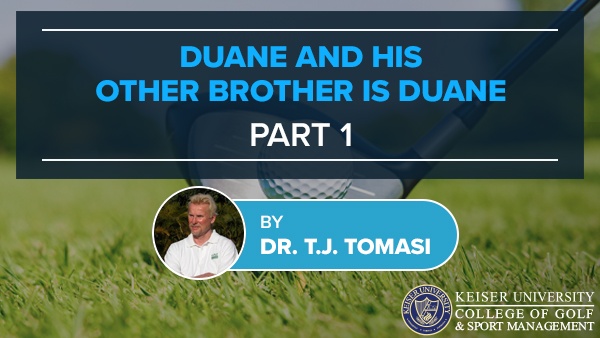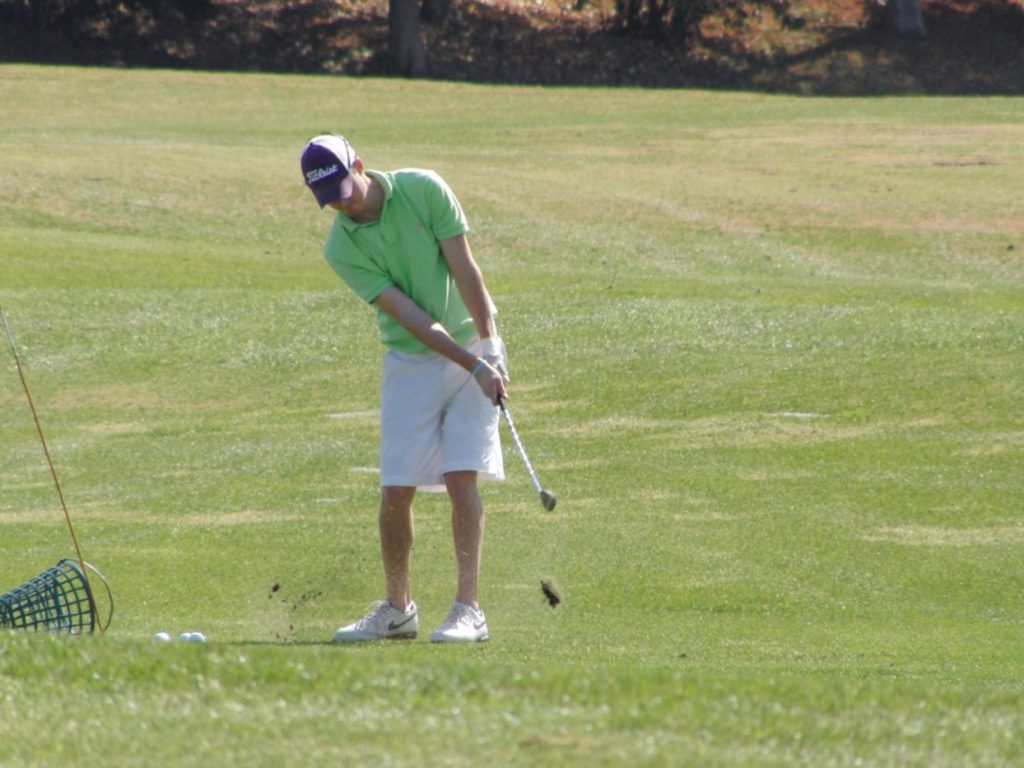Duane and His Other Brother Duane – Part 1

By Dr. T. J. Tomasi, Keiser University College of Golf Senior Faculty and Director of Research
Duane is a student who never makes the same swing twice in a row because he is always tinkering with his swing. It’s like teaching Duane and his other brother Duane. When I see him in the lesson book, I’m never sure who will show up. Like many golfers, Duane is looking for perfection, and he’ll try any tip, no matter how whacky. He’s tried cross-handed, eyes closed, holding his breath, and screaming like a banshee at impact – and these are some of his more modest experiments. At one point, he wrote instructions on his shirt so he could read them just before he swung. When that didn’t work, he proposed to me that he would rig a pair of glasses with a video screen so he could read his swing cues while he swung – at which point I put my foot down.
The Power of Repetition
The problem Duane has when it comes to learning is a major one. For the ‘Duane clan,’ repetition means one-in-a-row, which will not get it done in a world where reps are a key element in learning and storing golf information.
Good News for Duane
Scientists at the University of California, Berkeley, led by Jose Carmena, taught monkeys to use their brain signals to move a computer cursor to various targets using a prosthetic device (not a golf club, but who knows in the future). Then, after they understood the task, the monkeys learned to wield a robotic device using repetition to entrain the motion. “When your own body performs motor tasks repeatedly, the movements become almost automatic,” said Carmena; “Beyond its clinical applications, this line of research sheds light on how the brain assembles and organizes neurons and how it forms a motor memory repertoire to control the prosthetic device.” Now if Duane can use the power of myelin lying in wait in his brain – he’s got a chance.
The Neurobiology of Performance
Experiments at the National Institute of Health by Douglas Fields explain why practice and repetition are so important. A substance produced in the brain called myelin acts as an insulator – it wraps around your neurons. It prevents the electrical current that energizes your networks from leaking into the periphery. Brains with thick myelin layers think and act faster and more efficiently. When Albert Einstein’s brain was dissected, they found glial cells in much higher concentrations than in a normal brain, and that was about the only difference between his brain and a normal one. And what do glial cells do? They manufacture myelin. In an email response to my query, Dr. Fields explained what triggered the brain to make myelin: “Different signals released by axons (a part of a brain cell) in response to impulses regulate the growth, proliferation, and differentiation of myelinating glia.” In other words, when you repeat the same golf swing, it sends a signal down the pathway, and it is that signal which prompts the brain cell to generate a wrap of myelin. Do this enough, and you have a neuro-template of how to swing the club – and the more you wrap it, the more efficient the performance. Of course, you can learn a bad swing perfectly wrong, so it’s the learners’ job to make sure the technique they rep is correct. Enter the golf instructor to guide the process as it unfolds. Next week we’ll see how Duane did when I instituted a new learning rule called Repetition based on the role of myelin.

His technique (the how-to) is now perfect for the ‘2 bounce then grab’ shot. Next week we’ll see how the repetition part ensures that the technique part appears on request.
Learn more!
Want more tips? If you want to take your game to the next level, contact our team at Keiser University’s College of Golf & Sport Management today. With our dedication and experience, together, we can elevate your game to new heights. Give us a call today at 888-355-4465.














